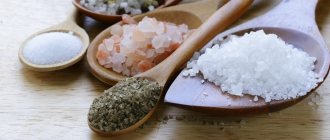Milk and its types
When it comes to milk, most people immediately think of a cow [1]. Although there are many other types of this drink that people also eat. Before we tell you what other types of this product exist, we note that the composition of milk is:
- casein (from cow, goat, sheep);
- albumin (from mares, deer, donkeys).
In addition to the drink produced by the mammary glands of animals, some products of plant origin are also called milk [2].
Benefits of different types of milk [3]:
- cow's milk is an excellent source of calcium and other nutritional components;
- sheep - fattier than cow, ideal raw material for pickled cheeses;
- goat - similar in composition to cow's, but is easier to digest due to the lower lactose content;
- mare's milk - the composition resembles human milk, used for making kumiss;
- eland antelope milk – contains 3 times more fat and protein than cow milk, known for its bactericidal properties;
- camel - contains a lot of vitamin C, does not clot;
- soy - a drink made from soy, looks and tastes like cow's milk, serves as a raw material for tofu cheese, as well as kefir, yoghurt, fermented baked milk, yogurt;
- coconut - made from coconut pulp and water, used in oriental cuisine, looks like cream;
- cow's milk - made in South America from the sap of galactodendron and other milk trees, used to treat asthma;
- rice - a source of fiber, calcium, vitamins, produced during the process of cooking rice;
- cedar - a source of phosphorus, manganese, many microelements, contains more proteins than cow's milk;
- poppy seed – was popular in Rus', contains a lot of calcium and fats;
- pumpkin - a drink with a delicate spicy taste, contains iron, magnesium, zinc, calcium, phosphorus, proteins;
- oatmeal is a source of all essential amino acids;
- almond – contains magnesium, phosphorus, calcium, folic acid, polyunsaturated fatty acids, vitamin E, zinc, goes well with coffee.
Content:
- Milk and its types
- Nutritional Components
- Milk: harm and benefit
- Precautionary measures
- What about lactose intolerance?
- Interesting facts about milk
Controversy about fat content
Back in the early 70s, opponents of milk appeared because of its fat content. They were women and girls who were on a low-fat diet. Currently, the boom of this power system has passed. Now people have become truly interested in the benefits and harms of low-fat dairy products. It was during that period that yoghurts, cottage cheese and cheese with zero fat content first appeared on the shelves. And only now scientists have released information that the beneficial substances (vitamins A, D, E and calcium) found in milk are not absorbed if the fat content of the product is less than one percent. In addition, along with fat, dairy products lose their natural taste and acquire a chemical taste. To restore taste, food additives and flavorings, which in most cases contain sugar, began to be added to such products.
Therefore, the benefits and harms of low-fat dairy products will depend on what opinion a person holds.
Nutritional Components
And although the chemical composition of all cow's milk is the same, the calorie content and percentage composition in some cases may differ. These indicators depend on the fat content of the drink, as well as the foods the cow ate. An average glass of whole milk has 145 calories, 8 grams of fat, 13 grams of carbohydrates and 8 grams of protein. A similar serving of a low-fat product contains only 86 kilocalories, there is no fat at all, and there are approximately the same amount of carbohydrates and proteins as in a whole product.
Calcium
Dairy products are one of the richest sources of calcium. Many functions in the body depend on this element. But perhaps its most famous task is to maintain the strength of bones and teeth. Meanwhile, this element is necessary for blood clotting and rapid healing of wounds, maintaining normal blood pressure, and healthy muscle contraction, including the heart. Nutritionists say that it is important to combine foods rich in calcium with sources of magnesium and vitamin D. This should be done, if only because vitamin D promotes the absorption of calcium in the walls of the small intestine, and magnesium helps the body “deliver” calcium to the bones. It is important that all these elements are contained in milk. As for calcium, a cup of drink contains more than 300 mg of this substance.
Kholin
The human body obtains choline from milk. This nutrient is essential for healthy sleep, muscle activity, strengthens memory and facilitates learning. Choline is important for maintaining the structure of cell membranes, helps transmit nerve impulses and absorb fats, and is useful in preventing chronic inflammation.
Potassium
Optimal potassium intake helps prevent stroke, heart disease, hypertension, protects against muscle loss, maintains a healthy mineral balance in bone tissue, and also prevents the formation of kidney stones. Researchers suggest that potassium can reduce mortality from heart disease by almost 5 times. Nutritionists recommend consuming about 4.5 g of potassium daily. A glass of milk contains about 365 mg of this substance.
Vitamin D
Today, dairy producers are increasingly fortifying milk with additional nutrients. Vitamin D is also on this list. This substance plays an extremely important role in bone health and promotes the growth and repair of bone tissue. Vitamin deficiency is fraught with the development of osteoporosis, depression, chronic fatigue, hypertension, PMS, colon and breast cancer, as well as muscle pain.
In addition to the listed substances, milk contains [4]:
- vitamin A;
- vitamin B2;
- vitamin B6;
- vitamin B12;
- magnesium;
- zinc;
- selenium;
- phosphorus.
It is important to know that some of the beneficial substances contained in milk do not accept sunlight and are destroyed under its rays. For this reason, the product should not be stored in clear bottles or containers.
Benefits of drinking milk
Currently, there is more and more debate among nutritionists about the benefits and harms of dairy products for the human body. Some are sure that such products are poorly absorbed and broken down by the body. Others argue the opposite, that it is the most important food after breast milk.
Positive results from constant consumption of dairy products:
- Calcium contained in milk helps strengthen bones, nail plates and hair. It is especially important to replenish the balance of this element for children and elderly people, whose bones become fragile every year.
- It is believed that milk can help you lose weight. Since this product saturates the body well and does not cause hunger.
- They reduce exposure to toxic and radioactive substances, and milk also has bactericidal properties.
- Used to prevent diseases. Milk reduces the risk of cardiovascular diseases.
Everyone knows that fermented milk products help normalize digestion. For example, kefir is excellently used in the treatment of constipation and poisoning. For this reason, fermented milk products are great for those who want to lose weight.
Milk: harm and benefit
Milk is one of the products that have a positive effect on many systems and organs of the human body [5][6].
For bone health
Perhaps everyone knows that milk is good for bones. This is because cow's milk is a source of calcium and vitamin D. In addition, the product contains vitamin K, ascorbic acid and magnesium. They are also essential for musculoskeletal health [7]. Intake of calcium and vitamin D alone is not enough to prevent osteoporosis. However, with regular physical activity, strength training, and a balanced diet low in sodium and high in potassium, the benefits for bones will be immediately noticeable.
Benefits for teeth
The combination of phosphorus and calcium found in milk is important for maintaining dental health.
The most common protein in dairy products is casein. It creates a thin film on the surface of tooth enamel, which prevents the loss of calcium and phosphorus under the influence of an acidic environment. Research has shown a link between regular milk consumption and a reduction in tooth decay.
Cancer Prevention
The risk of death from colorectal cancer is highest in geographic areas where residents receive the least amount of sunlight. As some researchers explain, the reason for this is a deficiency of vitamin D in the body. This useful substance, as has been scientifically proven, can protect against the occurrence of malignant tumors and slow down the growth of tumors. Other studies have shown that increased intake of lactose and calcium from dairy products may prevent ovarian cancer.
Anti-Depression Remedy
A sufficient level of vitamin D promotes the production of serotonin, the so-called happiness hormone - a substance responsible for improving mood, appetite and healthy sleep. Vitamin deficiency is associated with a tendency to depression, chronic fatigue, and PMS in women. Thus, milk as a source of vitamin D can relieve bad mood.
For heart health
Along with milk, the body receives potassium, which helps dilate blood vessels and lower blood pressure. Thus, increased milk consumption may serve as a remedy against hypertension.
It should also be noted that cow's milk contains high amounts of saturated fat and cholesterol. Because of this, some researchers, on the contrary, associate an increased risk of cardiac disorders with milk.
For strong muscles...
Children especially need dairy food during their growth period. However, not only babies need the proteins contained in milk. It is also important for adults, especially those who want to build muscle mass, to include this product in their diet. Milk is an excellent source of high-quality protein containing all the essential amino acids. In addition, whole milk can provide energy in the form of saturated fat.
Dairy proteins are excellent for promoting muscle growth and recovery. This effect has been proven in 20 different clinical studies involving people from different age groups.
...and a thin waist
Contrary to the common misconception that milk leads to excess weight, this drink, on the contrary, promotes weight loss. At least some studies have shown that consuming dairy products helps burn belly fat. This effect is achieved only if the daily calorie intake has not been exceeded. While it is difficult for scientists to explain the mechanism of this process, they suggest that all this is due to the calcium contained in milk.
Alternative to drinking water
The human body, two-thirds consisting of water, cannot live without liquid. Nutritionists say that the average adult should consume about 2 liters of clean water daily. However, if there is no water, you can quench your thirst with milk, which contains a large number of H2O molecules.
Skin care
Undoubtedly, you have heard about the Egyptian queen Cleopatra and her milk baths. According to legend, this woman, considered one of the most beautiful in the world, loved to take baths with milk and honey. This cosmetic procedure allows you to maintain softness, freshness and smoothness of the skin for a long time. Dairy products are still actively used to create skin care products. Milk is especially beneficial for dry skin.
This drink nourishes and smoothes the skin. Lactic acid helps remove dead cells and activates rejuvenation of the epidermis. Drinking milk internally saturates the body with vitamin A, an antioxidant that slows down age-related changes (prevents the appearance of wrinkles and age spots).
Other benefits of milk:
- helps reduce stomach acidity;
- has a beneficial effect on vision;
- promotes the production of red blood cells;
- relieves stress.
Why milk is useful: what it consists of and for whom it can be harmful
It is difficult to imagine the daily life of most people without milk. It is included in our menu in early childhood and remains on our table until old age. But if previously the benefits of this product were not questioned, recently they are increasingly talking about its intolerance and even harm to our body.
Let's figure out together why milk is beneficial and how it can harm us.
Composition and types
Cow's milk has a vast chemical composition that is particularly rich in calcium and protein. In addition to them, it includes the following substances and elements:
- iron;
- sulfur;
- phosphorus;
- potassium;
- vitamins A, C, E, PP, D;
- B vitamins;
- amino acids. Fresh milk during subsequent processing takes on the following types:
- whole (pasteurized) – undergone a process of filtration and thermal exposure;
- normalized – with increased or decreased fat content. The fat content of a product affects its calorie content. For example, 100 ml of milk with a fat content of 2.5% contains about 50 kcal. Beneficial properties
Milk often helps our body. It is believed that with its regular use you can achieve positive results:
- reduce stomach acidity;
- improve well-being with ulcers and gastritis;
- cope with heartburn;
- overcome insomnia and achieve deep, restful sleep;
- make joints, nails and teeth stronger due to the high calcium content;
- increase immunity and resist colds and infectious diseases;
- improve the functioning of the cardiovascular system;
- reduce swelling and improve kidney function;
- remove harmful substances from the body: toxins, waste, heavy metals. Benefits for women
Thanks to such a number of vitamins and microelements included in milk, it will undoubtedly bring many benefits to the fair sex.
To improve your well-being, simply introduce it into your daily menu. It also helps women maintain youth and beauty and is often included in home cosmetic recipes. And during pregnancy, milk has a beneficial effect on both the health of the fetus and the endurance of the expectant mother. However, when carrying a child, you should also remember that this product can negatively affect the functioning of the intestines and stomach. Therefore, women are advised to drink it in small sips when some time has passed after eating. If you have intestinal diseases, it is better to avoid this drink altogether. Benefits for men
A large amount of amino acids in milk will help men who are actively involved in sports to quickly increase muscle mass.
In addition, the benefits from a natural product will be much greater than from chemical mixtures and food additives of similar effect. Benefits for children
Oddly enough, but milk of animal origin enters the diet of babies no earlier than a year after their birth.
The fact is that in infancy, the only milk that their body can absorb is their mother’s. The maximum benefit from cow's milk and products made from it can be achieved by a child when he reaches three or four years of age. It is at this age that an actively growing body greatly needs calcium and phosphorus. Important! We recommend that you consult your pediatrician before introducing this product into your baby's diet, as he may be allergic to lactose. Benefits for older people
Milk is no less beneficial for older people.
After 40 years, a person begins to need increased doses of calcium to keep bones strong and resist the development of arthrosis and osteoporosis. Note: at this age, milk with low fat content will bring the greatest benefit.
This product also helps older people relax, calm the nervous system and improve sleep quality.
Benefits for weight loss
Low-fat milk will be your assistant when losing weight.
It has a low calorie content and at the same time it helps to cleanse the body of harmful substances, which means it speeds up the process of losing extra pounds and improves well-being. This drink goes best with cereals, eggs, thermally processed vegetables and fruits. For example, I really like to cook oatmeal for breakfast with milk with the addition of bananas, honey and nuts - it can be found in many diets and it is really tasty and healthy. Naturally, when choosing milk for your diet, you should pay attention to its fat content and give preference to a product with a minimum fat content. Traditional medicine recipes
Milk helped people cope with illnesses back in the days when pharmaceutical drugs did not exist.
Of course, now progress has gone far ahead, and it would be strange to treat serious diseases with cow's milk. But there are still cases when a good old recipe of traditional medicine will bring no less benefits than a modern remedy from a pharmacy. For colds Our grandmothers also successfully used a recipe using this product at the first sign of a cold or sore throat. It is enough to mix warm milk and a few spoons of honey - and the irritation on the mucous surfaces of the throat will decrease, the chills will go away, and you will feel much better. Tip: When you have a cold, take warm milk, not hot or cold milk.
This temperature will help preserve its healing properties and make it more enjoyable to take. For coughs At the first sign of a cough, prepare yourself a cup of warm milk mixed with honey, black pepper and cinnamon.
This drink should be drunk at night, before bed. You will immediately feel the healing warmth, fall asleep faster, and beneficial substances and vitamins will help relieve inflammation and discomfort. The benefits of fresh milk
Those who spent their childhood in the countryside have probably enjoyed homemade fresh milk more than once.
Such a product retains the maximum amount of useful substances, because it has not been subjected to pasteurization or sterilization. However, it is the lack of thermal treatment that can cause harmful microorganisms to multiply in the liquid. Experts recommend drinking a steam product only if you are confident in the health of the animal. In all other cases, I advise you not to take risks and consume already thermally processed liquid, especially since it also retains a sufficient amount of vitamins and microelements. Harm and contraindications
First of all, cow's milk is contraindicated for those who suffer from lactose intolerance. You should also avoid regular use of the product if you have the following diseases:
- excess weight;
- stones in the kidneys;
- pancreatitis;
- infectious poisoning. How to choose the right one
There is a huge selection of dairy products on store shelves. How to choose the most useful and high-quality type? Pay attention to the following parameters.
- Fat content
. Fat content affects the number of calories, so if you are looking for milk for a diet menu, choose a product with a low fat content. - Treatment
. Milk can be pasteurized and sterilized. Pasteurization preserves more useful substances than sterilization. - Compound
. Natural milk should not contain dyes or flavoring additives.
Attention! If the package says “milk drink,” this means that the content of the natural product in it is reduced and there are various additives.
If you want to purchase fresh milk, choose it from those suppliers whom you completely trust and who monitor the sanitary purity of their products.
Storage tips
It is best to store milk in the refrigerator.
In this case, fresh milk can be stored for no more than two days at low temperatures. Pasteurized can be stored for about five days after opening the package.
You can keep a sterilized product for the longest time - about a month, however, the amount of useful substances in it is lower.
You can also learn about recommendations for drinking this drink from the following video.
Compatibility with other products
Milk goes well with flour, pasta and cereals.
Combining milk with fresh fruits and vegetables is not recommended; this combination can cause heaviness in the stomach and problems with digestion.
But this product is perfect for mixing with tea or coffee. The high temperature of the liquid may reduce the amount of nutrients, but this mix will give the drink a delicate taste and softness, and will also reduce the impact of caffeine.
Conclusion
We are convinced that milk is a very healthy and completely natural product. To evaluate its medicinal properties and strengthen your body, just choose the type of product you need and remember the recommendations for its use.
Beginning of the form
End of form
Share on social media networks
Precautionary measures
Today, few people would be surprised to hear a diagnosis of “milk allergy.” No, this is not an invention of children who do not want to drink a white drink, but a completely serious medical problem. An allergy to cow's milk can manifest itself with one or several symptoms at once. Typically this is:
wheezing;- diarrhea;
- flatulence;
- vomit;
- attacks of suffocation;
- rash;
- rhinitis;
- gastrointestinal disorders;
- bleeding;
- anaphylactic shock.
Consuming too much potassium or phosphorus (both of which are found in high concentrations in milk) can be harmful for people with kidney dysfunction. If the organ is unable to remove excess potassium and phosphorus from the body, such oversaturation can be fatal.
Consumption of calcium in excessive doses is also dangerous [8][9]. Of course, it is difficult to achieve an overabundance with milk alone, but still. Hypercalcemia can cause constipation, kidney stones, and kidney failure. In addition, excess calcium can “settle” on the walls of blood vessels, which increases the risk of cardiovascular diseases (especially against the background of a lack of magnesium) [10].
The maximum dose of calcium for adults is 2.5 g per day.
Some researchers do not recommend giving cow's milk to children under one year of age. They believe that consumption of this product in infancy can cause insulin-dependent diabetes in adulthood. In addition, cow's milk may contain residues of hormones or antibiotics, as well as other substances that negatively affect the reproductive and immune systems of the body (especially for children) [11].
What affects the composition of breast milk?
Mothers who breastfeed their children often adhere to strict diets, explaining that nutrition has a direct impact on the composition and properties of breast milk, as well as on its quantity. However, this is a misconception: in order for the child to receive everything he needs with milk, strict diets are not required - on the contrary, a woman should adhere to a healthy, balanced and varied diet.
What about lactose intolerance?
Most people associate cow's milk with proper nutrition. However, there are many people in the world whose bodies are unable to digest lactose, a carbohydrate found in milk. Researchers believe that primitive man could have consumed milk exclusively in infancy. About 7,500 years ago, the population of Central Europe experienced some “restructurings” in the body. This happened after humanity domesticated cows and other livestock, and a new product – milk – entered their diet [12].
According to researchers, today approximately 15% of Europeans, 80% of Africans and Latin Americans, like primitive people, suffer from lactose intolerance [13]. Their bodies do not produce lactase, an enzyme necessary to break down dairy foods. In such cases, even small portions of dairy products cause abdominal pain, bloating, and diarrhea.
Modern medicine is looking for ways, if not to completely cure lactose intolerance, then at least to reduce its manifestations. This is how a lactose-free alternative appeared: soy, almond, coconut, hemp and other types of milk, including cow’s milk, but without the “problematic” carbohydrate.
What are thermostatic dairy products
Thermostatic is a method of producing dairy products in which raw materials are immediately poured into consumer containers (glasses, bottles, bags). Then the starters are added there and placed in special chambers at a certain temperature for further fermentation. The goods reach consumers in the same packaging. The quality of the resulting product is quite high: the consistency is uniform, the clot is dense and not broken. But the benefits and harms of thermostatic dairy products still need to be determined.
Scientists have determined that the new production method retains all the beneficial properties of milk. Protein from thermostatic kefir, yogurt, and sour cream is absorbed 30% faster than whole protein. These products are recommended to be given to children from the age of seven months.
How does the composition of breast milk change over the months?
Throughout breastfeeding, the composition of milk changes as it adapts to the baby's changing needs. Milk is divided into four types, which correspond to different feeding periods:
- Colostrum. A viscous, white-yellow liquid is formed during pregnancy and is released 3-4 days after birth (5 to 10 ml per day). Colostrum is very high in calories, contains many leukocytes, immunoglobulins, and proteins. It nourishes, protects the newborn from jaundice, and performs a laxative function.
- Transitional milk. It begins to be produced 4-5 days after birth. At this time, milk becomes more abundant, its composition changes: the content of fats, B vitamins, and carbohydrates increases.
- Mature milk. It is released 2-3 weeks after birth. It contains less protein, but more carbohydrates.
- Involutive milk. It is produced in small quantities in the second year of feeding a child. Its composition is similar to colostrum and contains many substances that strengthen children's immune system.
Composition of breast milk after a year of feeding
There is an opinion that prolonged breastfeeding is harmful to the baby. However, research results indicate the opposite: scientists have found that children 1.5–2 years old, whose mothers continue to breastfeed, get sick less often, tolerate illness more easily and recover faster than their peers who grow up on baby food. This is explained by the peculiarities of the composition of breast milk after a year of feeding: it contains a lot of immunoglobulins that protect the child’s body from diseases. Also during this period, the content of substances in breast milk increases that contribute to the development of the children's gastrointestinal tract.











